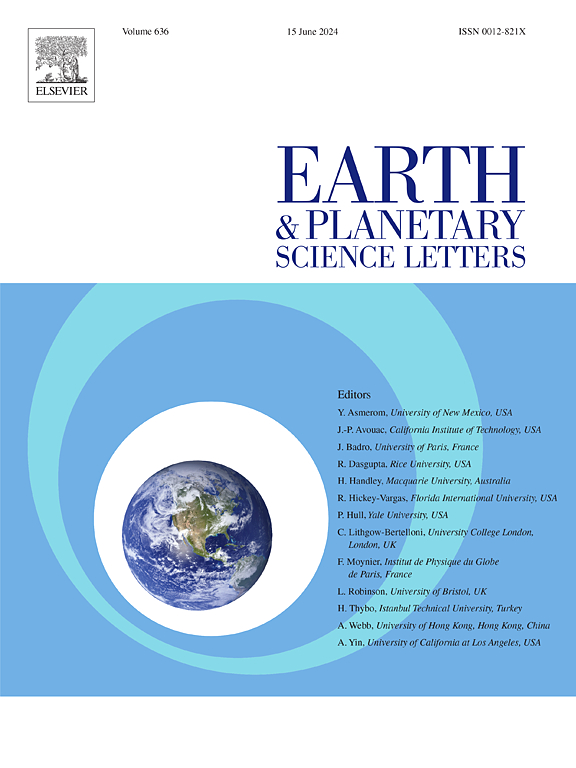北安纳托利亚断层伊兹密特段的慢滑事件周期
IF 4.8
1区 地球科学
Q1 GEOCHEMISTRY & GEOPHYSICS
引用次数: 0
摘要
沿地震断层发生的无震蠕变可释放累积应力并减少滑动损失,从而对地震灾害评估产生重大影响。自 1999 年土耳其北安纳托利亚断层发生 Mw7.6 级伊兹密特地震以来,虽然伊兹密特断裂的震后反应是地震蠕变,但在 2015 年和 2016 年还检测到了额外的缓慢滑动事件,在大约一个月的时间内产生了数毫米的相对位移。通过对 2016 年至 2021 年的干涉测量合成孔径雷达时间序列进行自动处理(FLATSIM 项目)并应用特定的后处理,我们提取了构造信号,以估算伊兹米特地段的滑动动态,包括慢滑动事件的探测和特征描述。在层状弹性半空间内的二维断层界面上建立深度滑移分布模型,我们估计锁定深度为 11 千米,稳定蠕变深度为 2 至 5 千米。在稳定蠕变区上方,我们在 2018 年 3 月和 2019 年 11 月发现了两个新的浅层慢滑事件,时刻量级分别为 4.3 和 4.4。根据蠕变仪的测量结果,我们估计 2019 年事件的横向传播速度为 6.4 公里/天。这些浅层慢滑动事件发生在沉积岩-岩层界面之上,表明摩擦特性的变化在瞬时滑动事件的发生中起着至关重要的作用。本文章由计算机程序翻译,如有差异,请以英文原文为准。
The slow slip event cycle along the Izmit segment of the North Anatolian Fault
The occurrence of aseismic creep along seismogenic faults significantly impacts seismic hazard assessment by releasing accumulated stress and reducing the slip deficit. Since the 1999 Izmit earthquake on the North Anatolian Fault in Türkiye, while aseismic creep has been observed as a postseismic response to the Izmit rupture, additional slow slip events were detected in 2015 and 2016, accommodating several millimeters of relative displacement over periods of approximately one month. By automating Interferometry Synthetic Aperture Radar time series processing from 2016 to 2021 (FLATSIM project) and applying specific post-processing, we extract the tectonic signal to estimate the slip dynamics of the Izmit segment, including the detection and characterization of slow slip events. Modeling the slip distribution at depth on a 2D fault interface within a layered elastic half-space, we estimate a locking depth of and steady creep between 2 and . Above the steady creep zone, we identify two new shallow slow slip events in March 2018 and November 2019, with moment magnitudes of 4.3 and 4.4, respectively. Based on creepmeter measurements, we estimate a lateral propagation velocity of for the 2019 event. The location of these shallow slow slip events above the sedimentary-bedrock interface suggests a critical role of variations in frictional properties in the occurrence of transient slip events.
求助全文
通过发布文献求助,成功后即可免费获取论文全文。
去求助
来源期刊

Earth and Planetary Science Letters
地学-地球化学与地球物理
CiteScore
10.30
自引率
5.70%
发文量
475
审稿时长
2.8 months
期刊介绍:
Earth and Planetary Science Letters (EPSL) is a leading journal for researchers across the entire Earth and planetary sciences community. It publishes concise, exciting, high-impact articles ("Letters") of broad interest. Its focus is on physical and chemical processes, the evolution and general properties of the Earth and planets - from their deep interiors to their atmospheres. EPSL also includes a Frontiers section, featuring invited high-profile synthesis articles by leading experts on timely topics to bring cutting-edge research to the wider community.
 求助内容:
求助内容: 应助结果提醒方式:
应助结果提醒方式:


